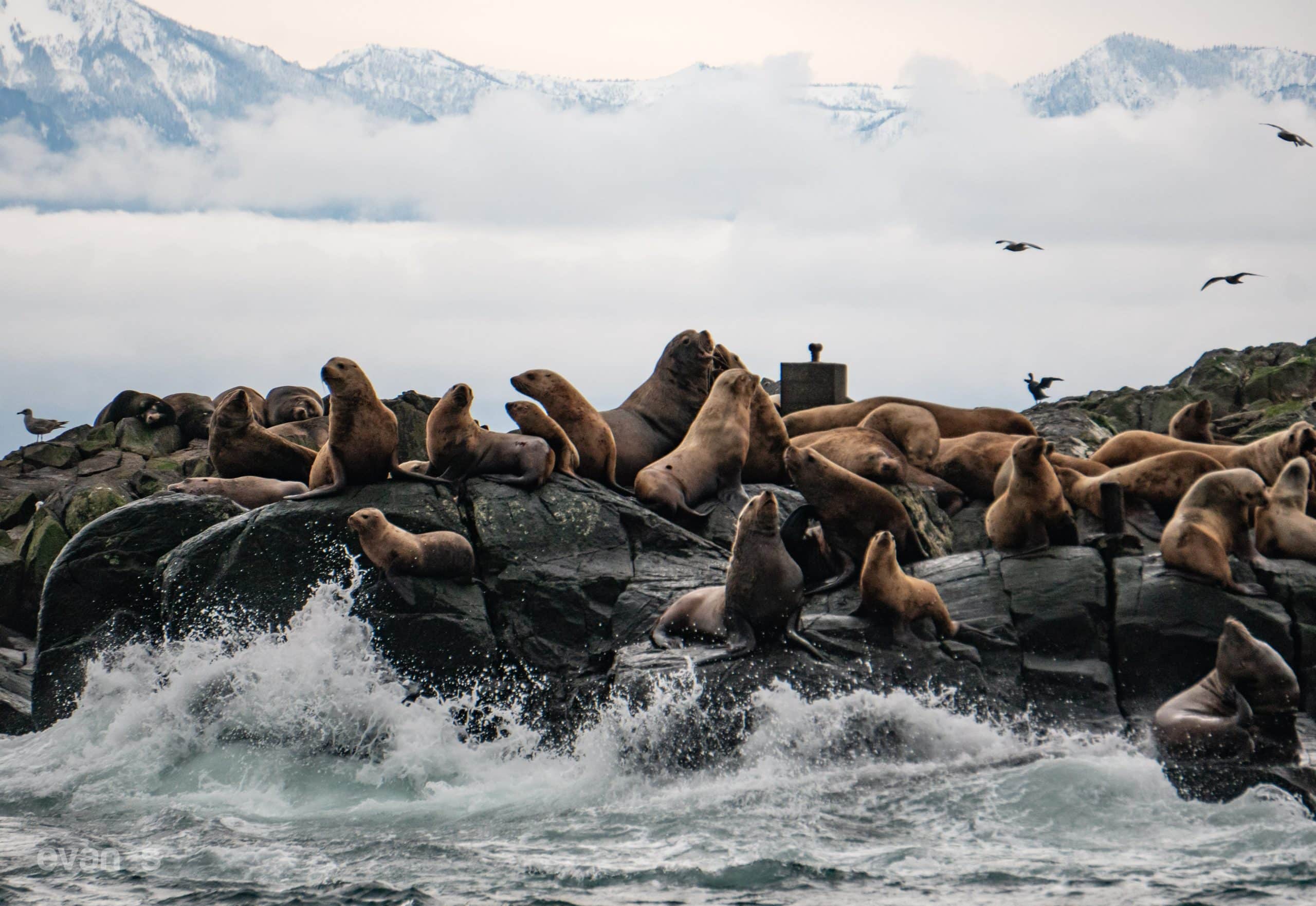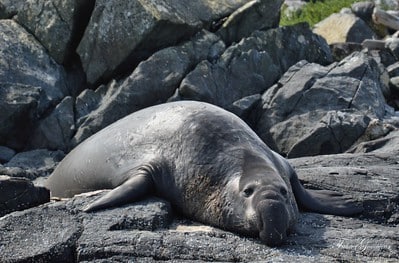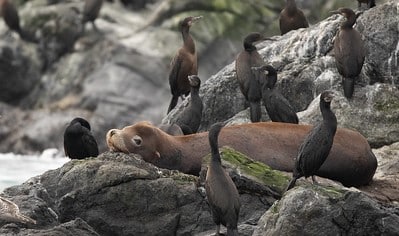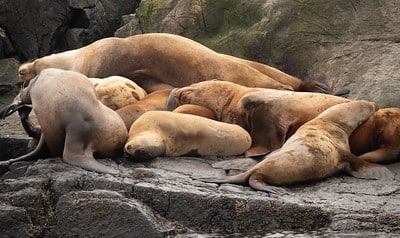Written by: Megan, Naturalist
Sometimes on our trips, we head west towards a local ecological reserve called Race Rocks. It’s the most southern point of British Columbia and has the second-oldest lighthouse on it. But what we are all really there for is our favourite furry friends – the seals and sea lions. But what are the differences when it comes to seals vs. sea lions?
If we look at it generally it all comes down to genealogy and classification.
Genealogy & Classification
Both seals and sea lions come under the term pinnipeds (a Latin word meaning “fin-footed”); this is then split into two categories. Otariidae (eared seals) and Phocidae (earless or “true” seals). Sea lions come under Otariidae and this is because they have cartilaginous, external flaps over their ears just like us. To be a “true” seal you do not have that flap. Seals just have small ear holes in the side of their heads. This is sometimes a really simple way to tell whether you are looking at a seal or a sea lion. Especially if all you can see is a head popping out of the water.
There are 19 species of earless seals and here in the Salish Sea, we have two; Harbour seals (also known as Common seals in some parts of Europe) and the endangered Northern Elephant seal.
There are 16 species in the eared seal family. 10 fur seals and 6 types of sea lions, again we have two types of sea lions: Californian and Stellar.
If you look at it from a localised perspective the differences between seals and sea lions in the Salish Sea range from size, appearance and even habitat range.
Physical Differences
A massive difference between seals and sea lions is that seals have a fused pelvic bone which massively reduces the movement in the front half of their bodies. For this reason, movement comes from the back half of their body making them move in a “wormlike” way. They also have smaller pectoral flippers as they aren’t able to use them to move around in the same way as sea lions.
Harbour Seals
The Harbour seal is the smallest of the four species. Around 5-6ft in length and around 300lb. They can often be seen hauling out on rocks to rest and digest their food. They pup in June, July, and August with Race Rocks being one of their breeding grounds. They aren’t as social as sea lions so you only see a few together at once, unless its breeding season!
Northern Elephant Seals
Northern Elephant Seals are the largest of all pinnipeds. Females can be 10ft and weigh 1,200lb but the males are even bigger reaching up to 13ft in length and weighing a massive 4,400lb! This species is a little different from other seals and sea lions due to their slight advance in evolution. Whereas most pinnipeds spend a majority of their time on land, Northern Elephant seals have evolved to be almost fully aquatic, sometimes spending weeks out at sea without ever coming to land. They pup in the winter and if you brave one of our Zodiac wildlife tours during December and January you can see a small colony of 15-16 females having their pups! You might even see the male beach master!
California Sea Lions & Stellar Sea Lions
We have two types of sea lions. The smaller of the two are California sea lions. These are the ones everyone is most familiar with. They have that classic bark everyone knows and are most commonly the species seen in captivity. They are 6-7.5ft in length and weigh up to 700lb. They are slightly smaller than their Steller cousins, have dark brown fur, and have a pointy snout.
We have two types of Sealions. The smaller of the two are California sea lions. These are the ones everyone is most familiar with. They have that classic bark everyone knows and are most commonly the species seen in captivity. They are 6-7.5ft in length and weigh up to 700lb. They are slightly smaller than their Stellar cousins, dark brown, and have a pointy snout.
Stellar sea lions are larger with the males at 11ft and 2500lb. They are a deep blonde colour and they have rounder snouts. They also do not bark but let out a deep growl. We think that sea lions may have evolved from bears especially because if you compare a stellar sea lion skull and a grizzly bear skull they look very similar!
Although I am of course a whale girl first and foremost I absolutely love going to visit these guys, they are so funny with their acrobatic displays, fighting, and noisy barking. It’s guaranteed fun all through the year!
If you would like to learn more about these marine mammals, visit our Wildlife Learning Centre page on seals, sea lions, and otters.
For a chance to see any of these species in person, book a whale watching tour with us today!














